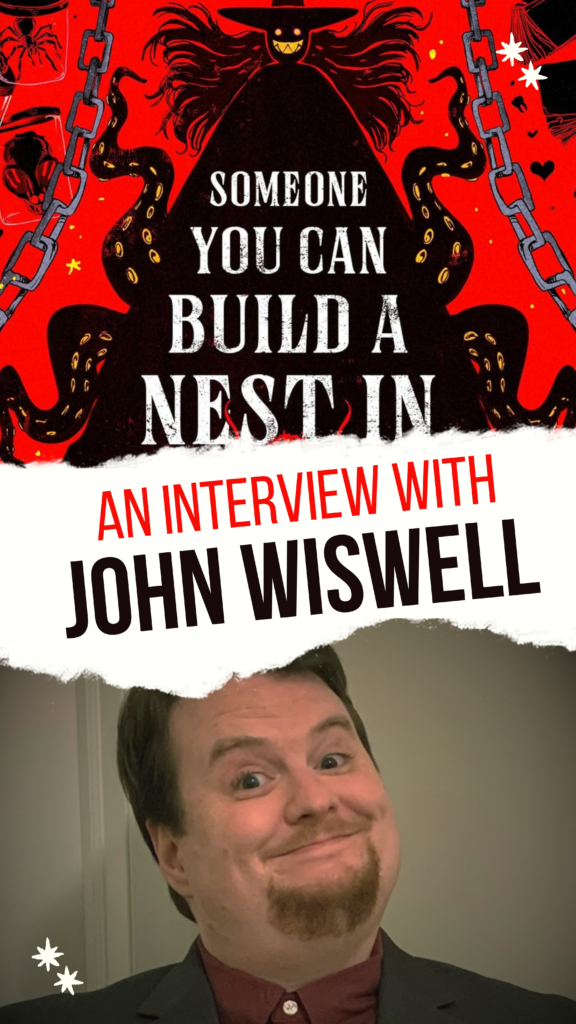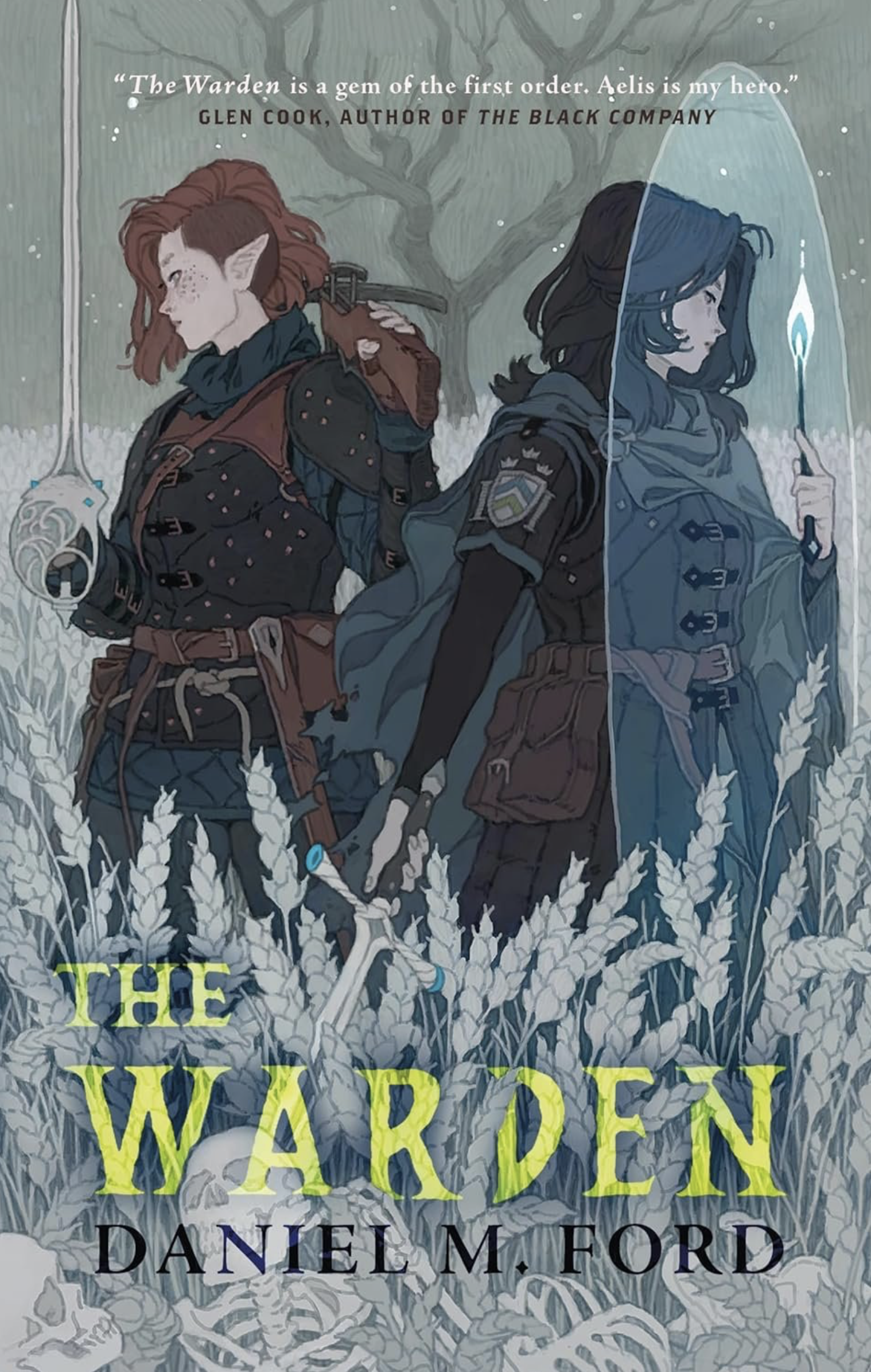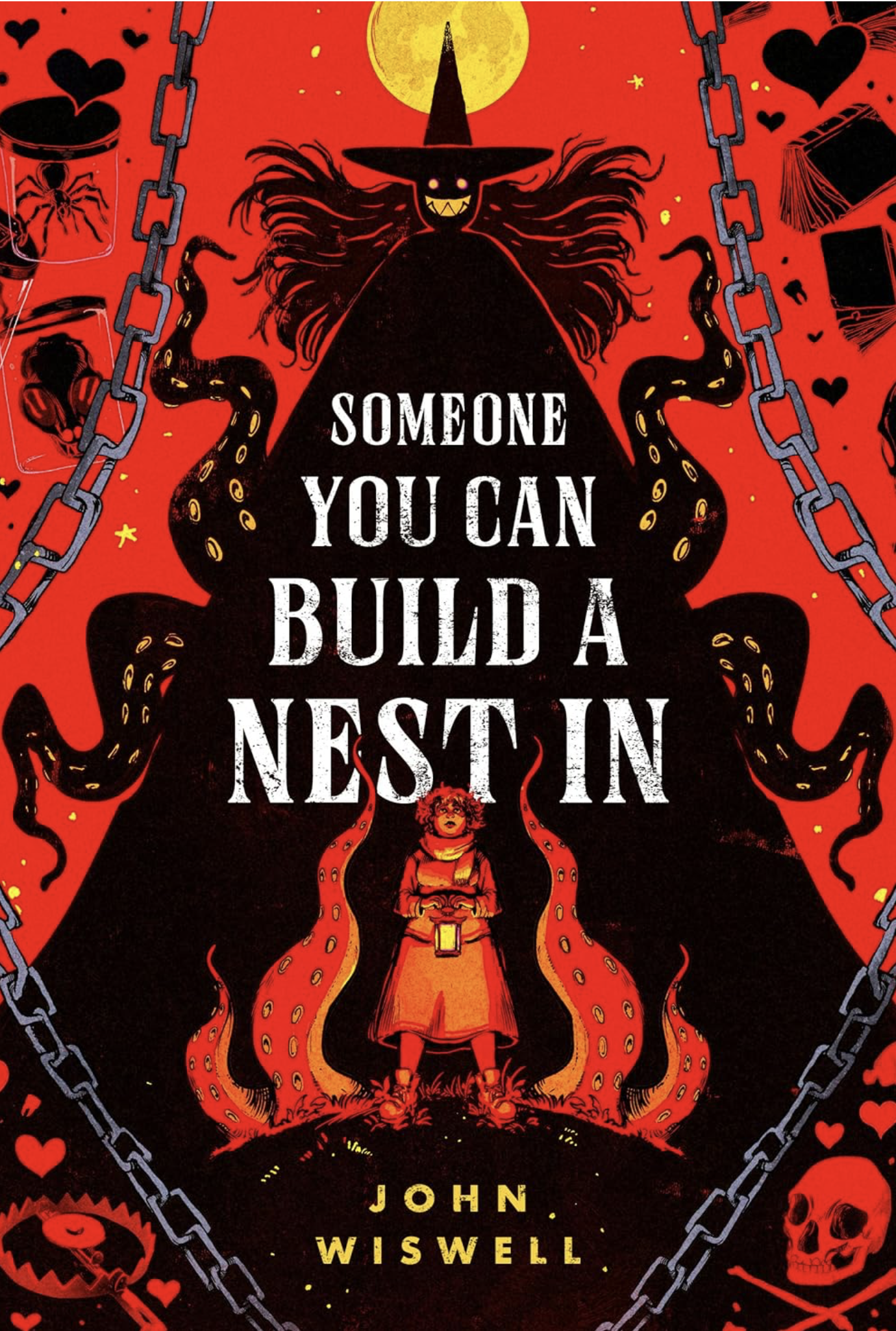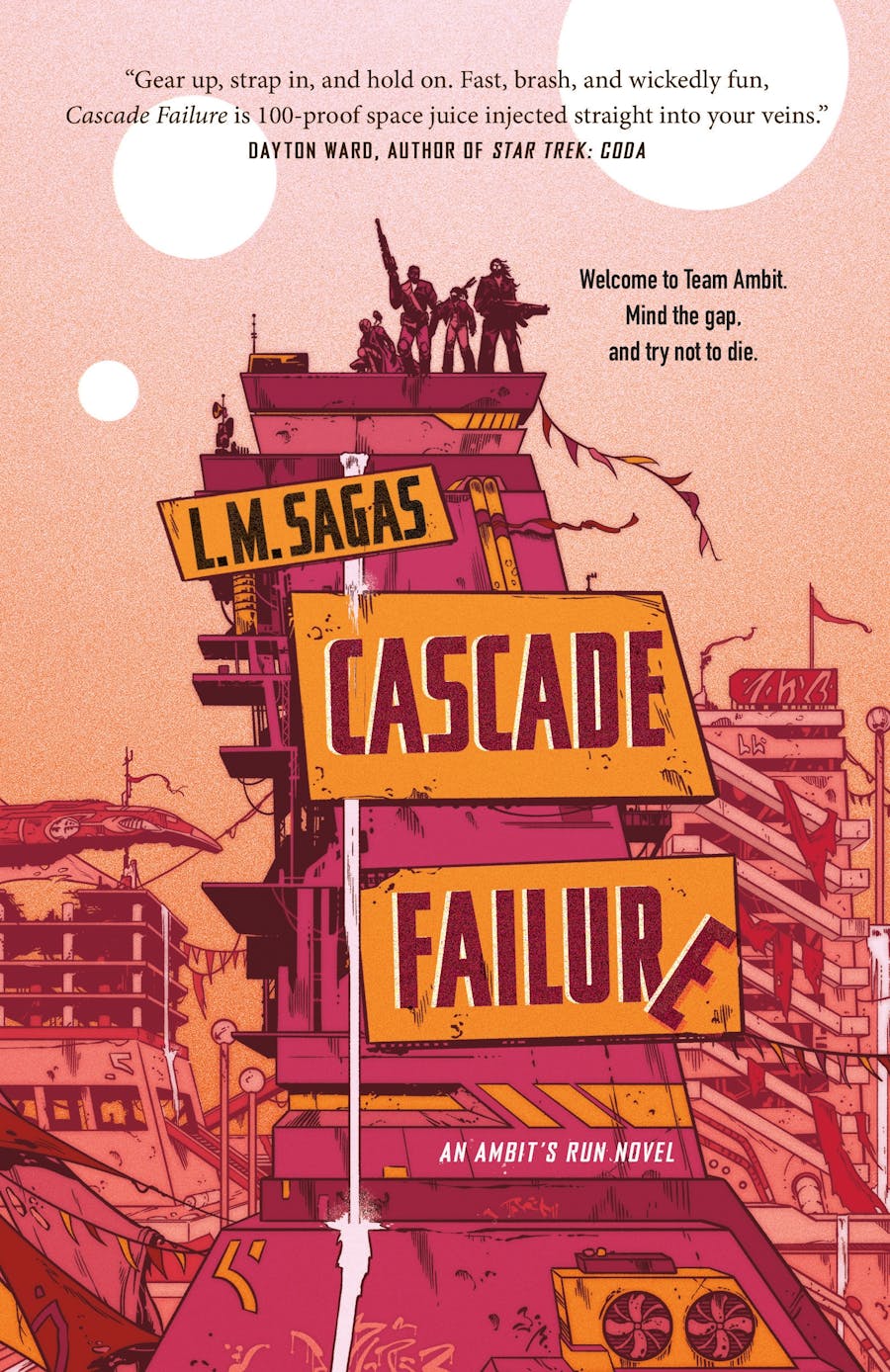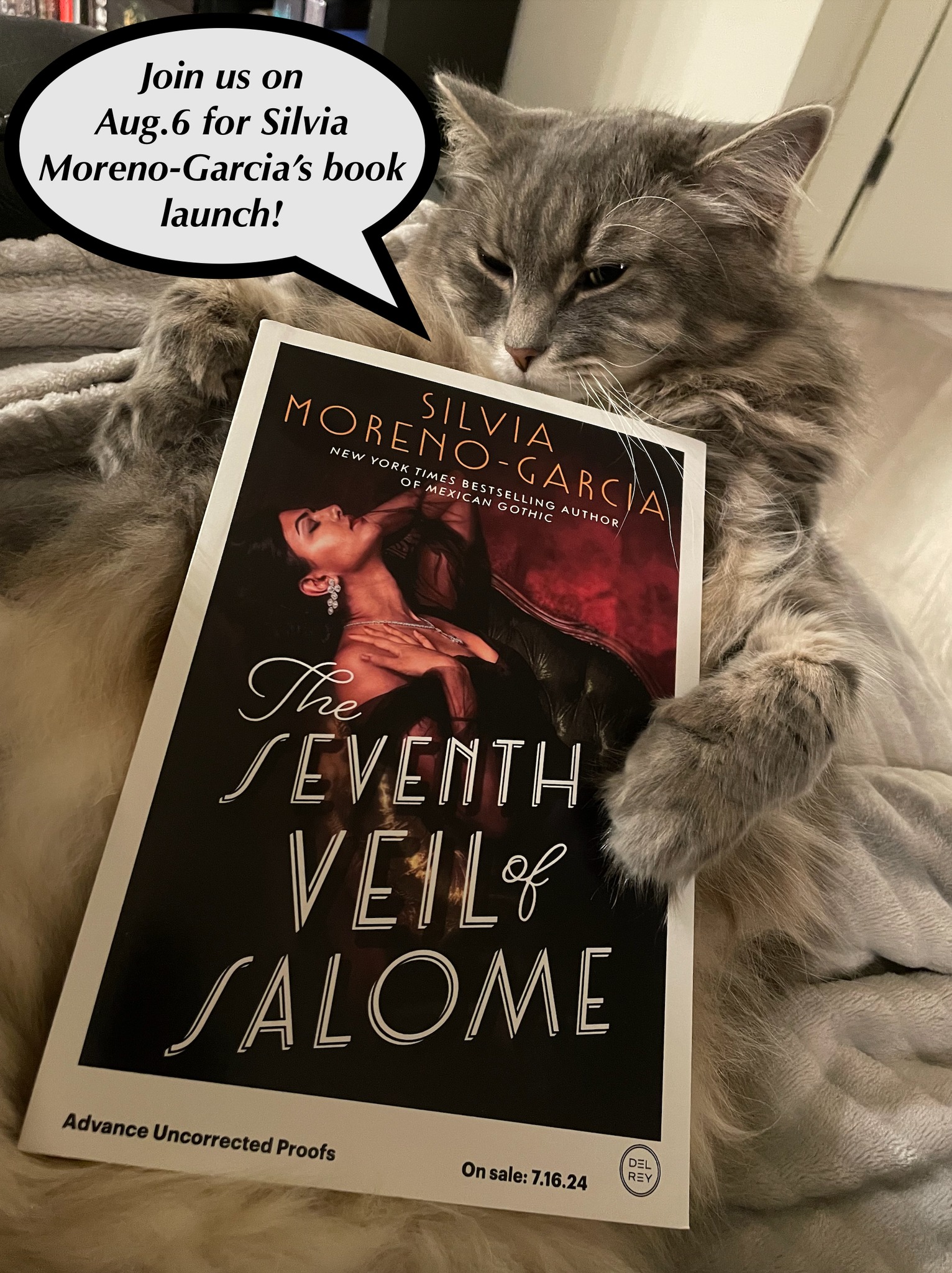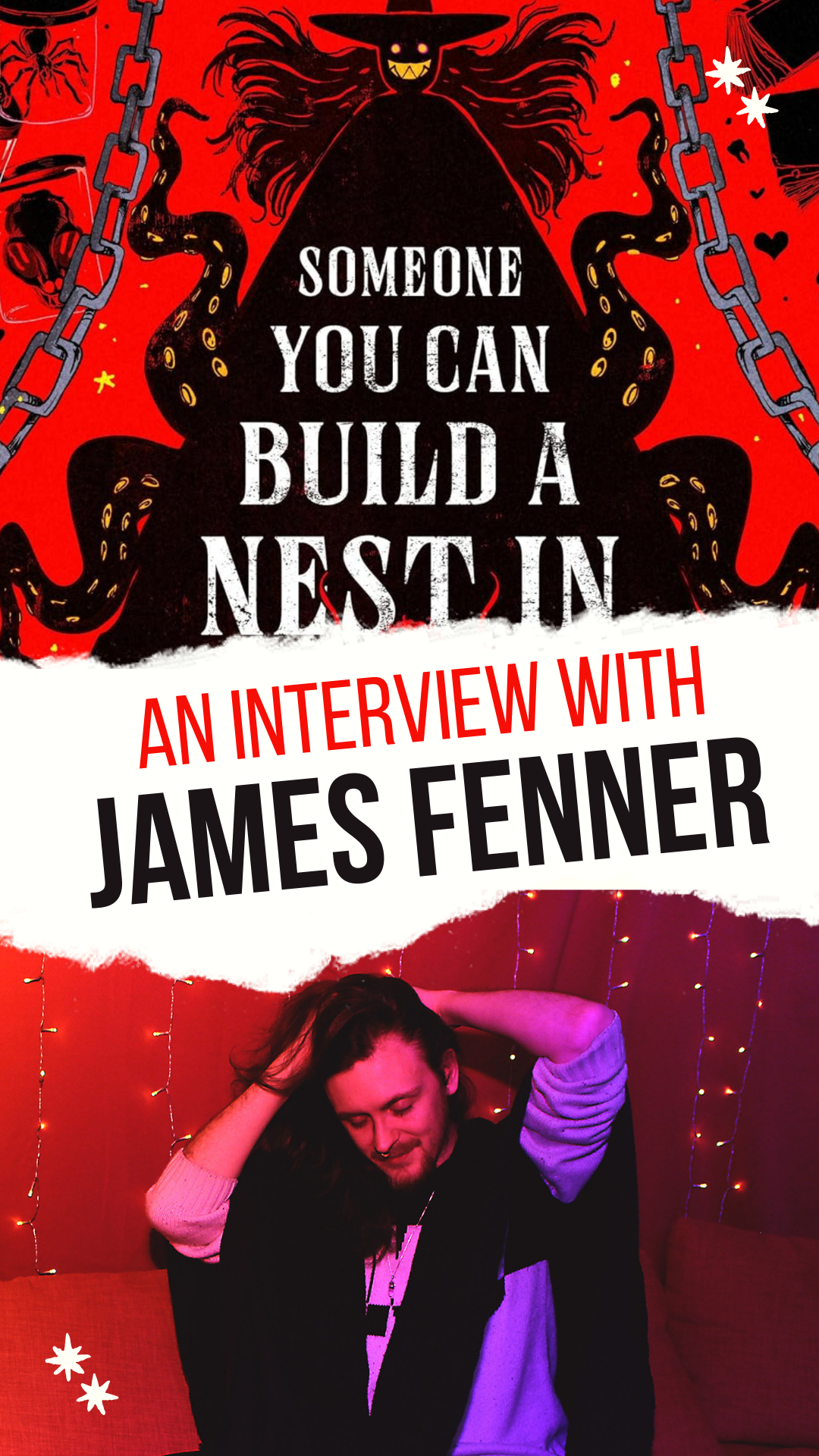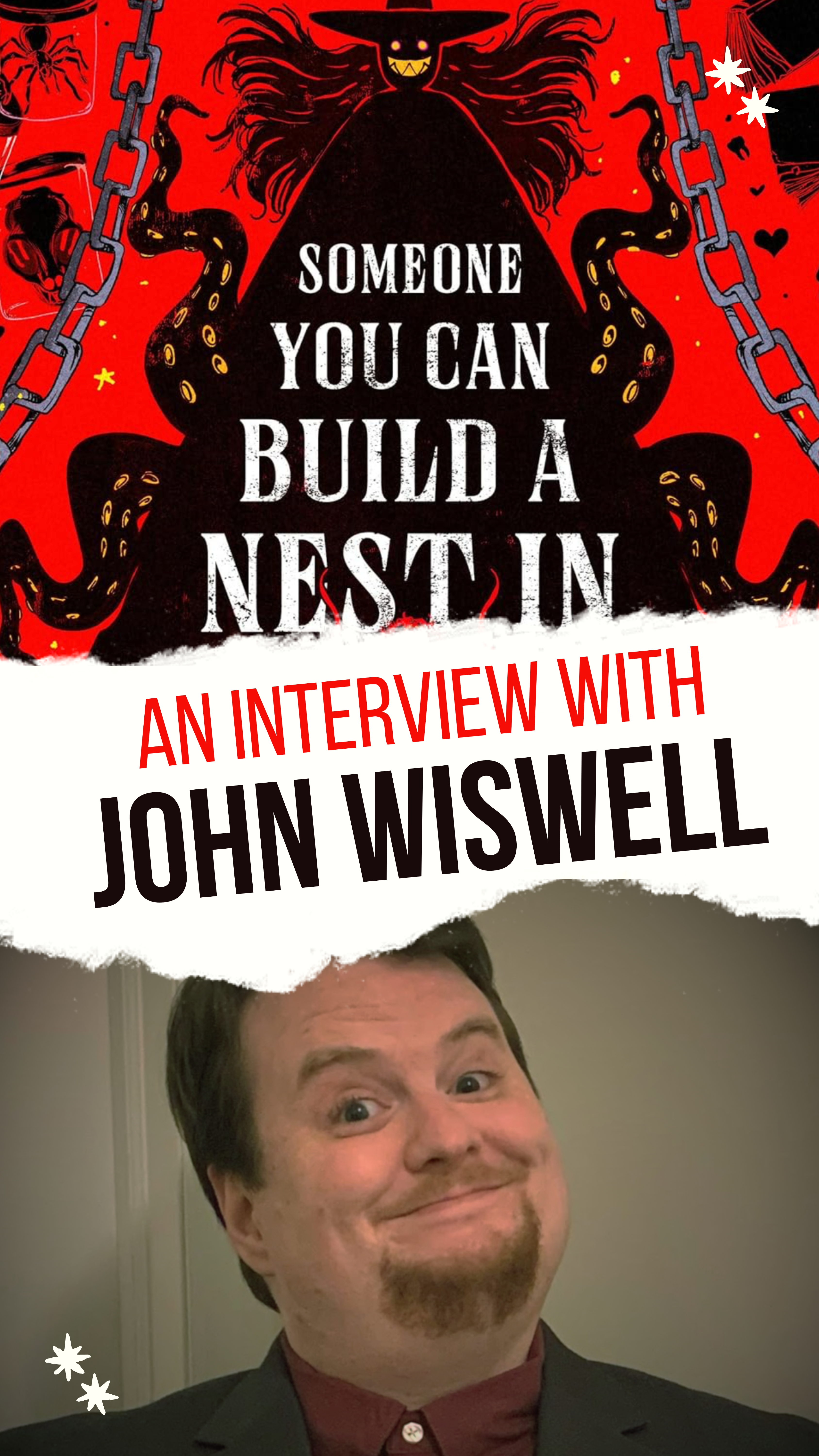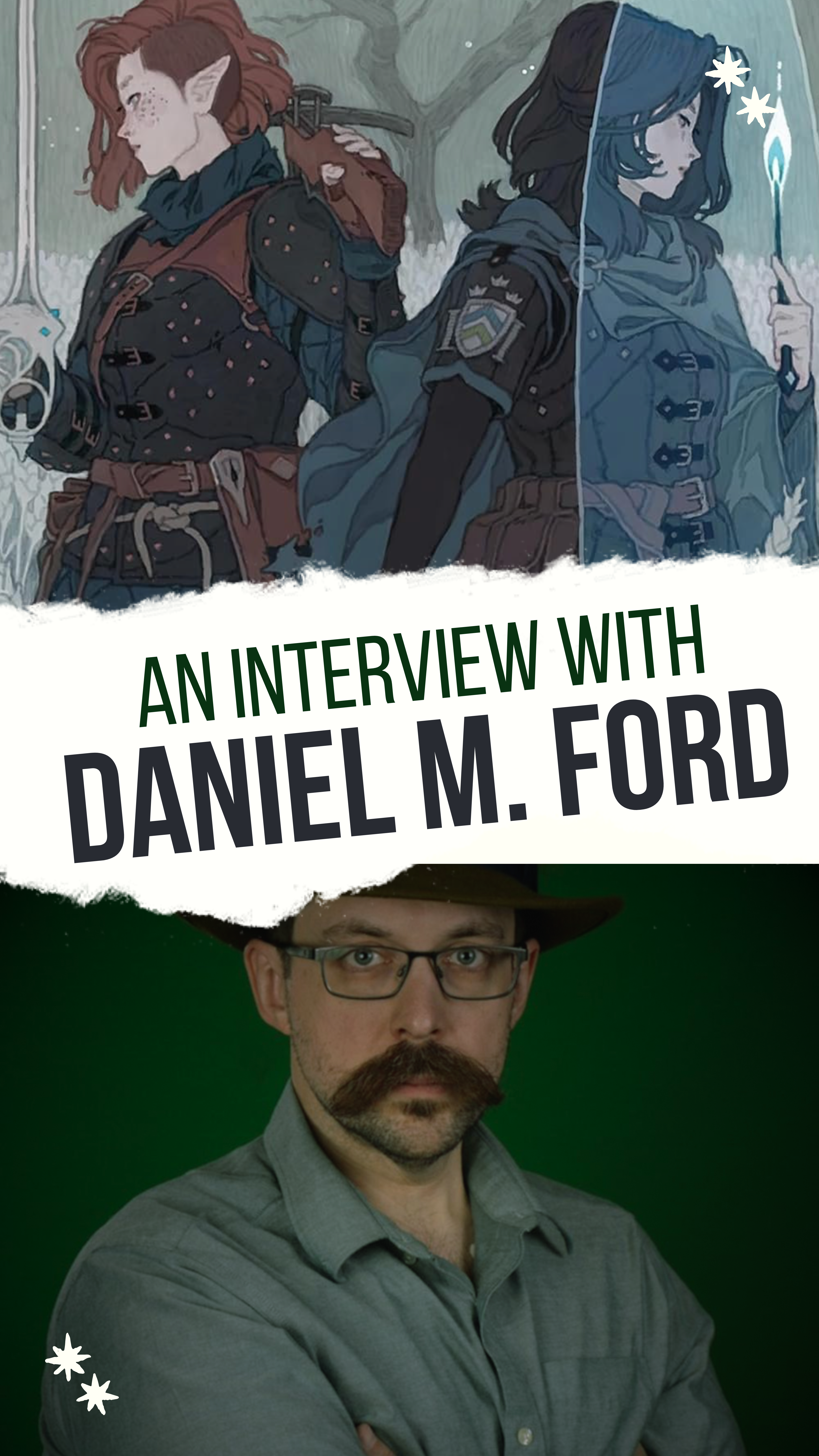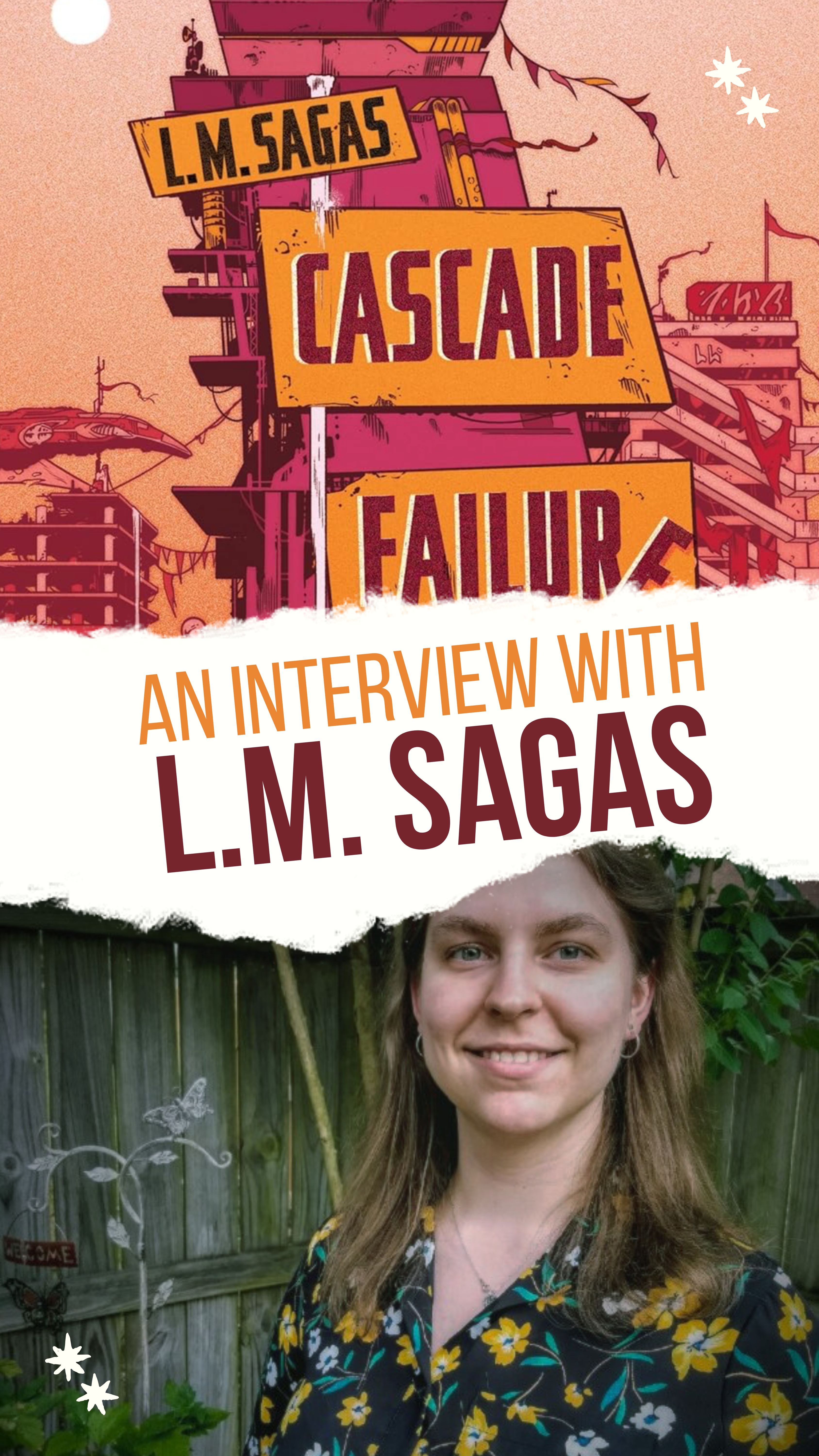Someone You Can Build A Nest In is the delightfully monstrous debut novel from Locus award-winning author John Wiswell, in which an otherworldly shapeshifter falls in love with a warm-hearted human. Although it has more blood and viscera than you’d expect from a fantasy romance, this is one of 2024’s most poignant and charming stories. Shesheshen and Homily’s love story has the perfect blend of horror, humor, and heart, and it absolutely deserves a place of honor on your bookshelf.
Author John Wiswell has come to Earthshine Tower to discuss his debut novel, Someone You Can Build A Nest In, and chat about his writing process and inspiration.
What would you most like readers to know about this novel before they dive into Shesheshen’s world?
It’s okay to love monsters. It’s okay to see yourself in them, or think you’d get along with them, or just wish some character would try being nice to one. This is a book about making textual reality out of classic subtext. Disabled and queer people have often been represented as monstrous; here the monster is all of that, and proud, and unapologetic. This is for readers who wish they could bring tea to Circe and Murderbot, Grendel and Gollum, Piccolo and Dracula’s brides.
From the opening pages of this novel, it’s clear that Shesheshen is delightfully and unapologetically herself; a shapeshifting being who is othered by humanity for existing simply as she is. Although she rebuilds her own body constantly, Shesheshen is utterly unprepared forthe way that love unexpectedly changes her. Can you discuss this aspect of her character?
So on the one hand Shesheshen was a deeply liberating character to write. She has no shame for her body, her disabilities, or her neurodivergent way of thinking. She is funny and weird, and like you said, unapologetic. She tends to be skeptical of the world rather than doubting herself. Like the readers, I love that about her! But until now that has been her entire identity. Love complicates this. Because the closer she gets to Homily, the more her concerns extend beyond herself. She risks her safety for another. Self-preservation, which has always been her goal until now, becomes secondary to her curiosity about Homily’s history and secrets, and as the story ramps up, is also secondary to Homily’s own safety. Love is putting others before yourself, and that’s complicated for people who’ve had to fight to be safe their whole lives. Shesheshen is both fascinated with and terrified of what it means to be there for someone else. Especially someone who might, kinda, sorta be hunting her.
Homily’s kind-hearted nature conceals a deep well of loneliness and trauma that she slowly bares to Shesheshen over the course of the story. As the reader learns how true monstrosity has shaped Homily’s life, it becomes more apparent why these characters are drawn to one another.Can you elaborate on the love that grows between Shesheshen and Homily because of their shared desire for connection?
There’s a funny thing in our culture: this erroneous belief that only angry people carry harm with them. Some of us carry that harm and strive to be kind and better to others than people have been to us. Homily carries that deep within her. She’s someone that any stranger would be lucky to meet, but that’s not the result of being sheltered. It’s the result of needing shelter, and having known insecurity, wanting to provide it for others. Which makes her the perfect stranger for Shesheshen to meet. Shesheshen is certain that humans are only ever selfish, thoughtless, and dangerous. You can’t blame her. But you also can’t blame her for being fascinated with this cheery woman who has soldiered through so much harm. Shesheshen genuinely didn’t know a kind of person like Homily could exist. And until now, she didn’t know how badly she needed someone like her.
In many ways, Shesheshen spends the novel yearning for a true nest that compares to the one she enjoyed in her infancy, a place where she felt truly sheltered and at peace. Finding that the family she chooses for herself is the true nest is a beautiful revelation. Can you elaborate on this aspect of the story?
Shesheshen has lived most of her life in isolation, where any encounter with people puts her at risk of being slain. She romanticizes her childhood because, having never known her monstrous mother, it is all the heritage and culture she has. She can only assume that carrying on the family business is what’s best in life. (Laughs) Even if that means laying eggs in someone. Her story is about finding actual bonds with someone, and how that challenges what she thinks she should want. Because connections change our values, and show us we’re more than we thought we were. Even if we thought we were monstrous.
The names in this story appear to be imbued with important narrative significance and give subtle hints about the nature of each character. Can you discuss how you decided on the character names for this story?
Well explaining some of their names would be spoilers! (Laughs) The Wulfyre family in particular had a theme in mind naming their children, and I hope readers will chew on the theme after the book is over. For most of the people in Underlook, I aimed to express the diversity of the town through naming. This is an important stop on an economic highway. People from all over the world have stopped and built lives here, so it was important to not just have people sound English or French. The outlier, of course, is Shesheshen herself. Hers is a name she fashioned with a half-made throat. The inspiration actually came from my own asthma. “Shesheshen” came from sounds I caught myself making as I was struggling to breathe. Disability is such a part of her existence that I wanted it to be reflected in her name. Plus, it’s fun to say!
The US edition of Someone You Can Build A Nest In features a dramatic image of Shesheshen in all her tentacular glory. She is silhouetted behind Homily, who is holding a glowing lantern and gazing out into the darkness. Before the reader even opens the novel, they are given a tantalizing impression of what the story contains. Can you discuss James Fenner’s contributions to the novel through this cover art?
I adore James’s cover! I’ve loved his art for years. It regularly goes viral (and it should). He has a knack for making inhuman figures feel like they take up the whole frame because of how they thematically resonate with the rest of the image. And here he brought Shesheshen’s personality out in force. The whole cover is a reflection of Shesheshen’s messy joy, her pride in herself, at being out of her lair and growing stronger. The smile he gave her still brings me such happiness.
On your blog, and in the acknowledgements of the novel, you discuss the ways in which you owe a debt to the stories of your childhood that helped you endure numerous debilitating health challenges. As a child, could you ever have envisioned the way in which you would provide the same support for so many readers who see themselves reflected in the characters you bring to life?
I’m still shocked when writers say I’m a big influence on them today. (Laughs) The greatest achievement I can have in storytelling is to pay that forward. I’m a writer because I’m a reader, and because I exist in the vast ecosystem of storytellers who are telling stories nobody else could. I wouldn’t have survived my childhood without stories, and I wouldn’t want to live as an adult without telling them. Every single reader whose life I make even a little better, even for just one night, is a gift. It humbles me, to be able to be there for somebody without being in the room. To all of my readers: I’m glad you’re here.
Someone You Can Build A Nest In feels like a glorious culmination of many of the themes you’ve explored in your award-winning short fiction, such as the queer identity, disability, and alienation. Can you discuss how the experience of writing this novel was different from the work you’ve done in the past?
When I get deep into a story, my drive is always to do justice to the characters. Sometimes a story is only 800 words long because the characters have crystalline simplicity that lines up all of their huge themes and personally important elements. Shesheshen and Homily were certainly different! They’re messy people with so many layers that could only be understood by spending a lot of time with them, and in seeing them get closer together, getting more vulnerable, and finding more context of their lives than they even knew they had. Novels are beautiful because they can let any moment breathe and expand. I’ve won awards for stories that are shorter than some individual chapters in this book. (Laughs) But like you said, the themes of disability and queerness and yearning for connection with others are all there. Many of my shorts focus on one character’s growth and context, but here we have two who have so much to give to each other, and have so far to go. In many ways sharing the book between two such characters let consequences of their choices bloom.
John is a disabled writer who lives where New York keeps all its trees. He is a winner of the Nebula and Locus Awards for Best Short Fiction. His work has appeared in Uncanny Magazine, the LeVar Burton Reads podcast, Tor.com, and other fine venues.
You can find him at his website and on substack.


